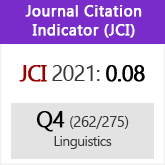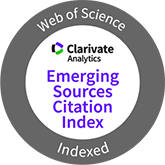Investigating speaker individuality in the Swiss Standard German of four Alemannic dialect regions: Consonant quantity, vowel quality, and temporal variables
DOI:
https://doi.org/10.3989/loquens.2020.070Keywords:
speaker individuality, Alemannic dialects, Swiss Standard German, consonant quantity, vowel quality, temporal featuresAbstract
While German-speaking Switzerland manifests a considerable amount of dialectal diversity, until the present day the phonetic interrelation of Alemannic (ALM) dialects and spoken Swiss Standard German (SSG) has not been studied with an acoustic phonetic approach on the speaker level.
In this study, out of a pool of 32 speakers (controlled for sex, age, and education level) from 4 dialectologically distinct ALM areas, 16 speakers with 2 dialects were analysed regarding SSG consonant duration (in words whose ALM equivalents may or may not have a geminate), 8 speakers from the city of Bern (BE) were analysed for vowel quality, and 32 speakers were analysed for temporal variables, i.e., articulation rate (AR) and vocalic-speech percentage (%V).
Results reveal that there is much intradialectal inter- and intraspeaker variation in all three aspects scrutinised, but especially regarding vowel quality of BE SSG mid vowels and temporal variables. As for consonant quantity, while intradialectal interspeaker variation was observed, speakers showed a tendency towards normalised SSG consonant durations that resemble the normalised consonant durations in their ALM dialect. In general, these results suggest that a speaker’s dialect background is only one factor amongst many that influence the way in which Swiss Standard German is spoken.
Downloads
References
Ammon, U., Bickel, H., Ebner, J., Esterhammer, R., Gasser, M., Hofer, L., Kellermeier-Rehbein, B., Löffler, H., Mangott, D., Moser, H., Schläpfer, R., Schlossmacher, M., Schmidlin, R. & Vallaster, G. (2004). Variantenwörterbuch des Deutschen. Die Standardsprache in Österreich, der Schweiz und Deutschland sowie in Liechtenstein, Luxemburg, Ostbelgien und Südtirol. Unter Mitarbeit von Kyvelos, R., Nyffenegger, R. & Oehler, T. Berlin & New York: Mouton de Gruyter. https://doi.org/10.1515/9783110905816
Asadi, H., Nourbakhsh, M., He, L., Pellegrino, E. & Dellwo, V. (2018). Between-speaker rhythmic variability is not dependent on language rhythm, as evidence from Persian reveals. International Journal of Speech, Language and the Law, 25(2), 151-174. https://doi.org/10.1558/ijsll.37110
Bates, D. M., Mächler, M., Bolker, B. & Walker, S. (2015). Fitting linear mixed-effects models using lme4. Journal of Statistical Software, 67(1), 1-48. https://doi.org/10.18637/jss.v067.i01
Christen, H., Glaser, E. & Friedli, M. (2013). Kleiner Sprachatlas der deutschen Schweiz. Frauenfeld: Huber.
Christen, H., Guntern, M., Hove, I. & Petkova, M. (2010). Hochdeutsch in aller Munde. Eine empirische Untersuchung zur gesprochenen Standardsprache in der Deutschschweiz. Stuttgart: Steiner.
de Jong, N. H. (2018). Fluency in second language testing: Insights from different disciplines. Language Assessment Quarterly, 15(3), 237-254. https://doi.org/10.1080/15434303.2018.1477780
de Jong, N. H. & Mora, J. C. (2019). Does having good articulatory skills lead to more fluent speech in first and second languages? Studies in Second Language Acquisition, 41(1), 227-239. https://doi.org/10.1017/S0272263117000389
Dellwo, V., Leemann, A. & Kolly, M.-J. (2015). Rhythmic variability between speakers: Articulatory, prosodic, & linguistic factors. Journal of the Acoustical Society of America, 137(3), 1513-1528. https://doi.org/10.1121/1.4906837 PMid:25786962
Dieth, E. (1938). Schwyzertütschi Dialäktschrift. Leitfaden einer einheitlichen Schreibweise für alle Dialekte. Nach den Beschlüssen der Schriftkommission der Neuen Helvetischen Gesellschaft (Gruppe Zürich). Zurich: Orell Füssli.
Draxler, C. & Jänsch, K. (2004). SpeechRecorder - a universal platform independent multi-channel audio recording software. Proceedings of the 4th International Conference on Language Resources and Evaluation, Portugal, 559-562.
Duden (2015). Aussprachewörterbuch. Wörterbuch der deutschen Standardaussprache. S. Kleiner, R. Knöbl & M. Mangold (Eds). 7th ed. Berlin: Dudenverlag.
Eckhardt, O. (1991). Die Mundart der Stadt Chur. Zurich: Phonogram Archives of the University of Zurich.
Ferguson, C. (1959). Diglossia. Word, 15, 325-340. https://doi.org/10.1080/00437956.1959.11659702
Grabe, E. & Low, E. L. (2002). Durational variability in speech and the Rhythm Class Hypothesis. In V. Gussenhoven & N. Warner (Eds), Laboratory Phonology, 7, 515-545. Berlin & New York: Mouton de Gruyter. https://doi.org/10.1515/9783110197105.2.515
Guntern, M. (2011). Erkennen von Dialekten anhand vom gesprochenen Schweizerhochdeutsch. Zeitschrift für Dialektologie und Linguistik, 78(2), 155-187.
Guntern, M. (2012). Dialekt und gesprochene Standardsprache: Wie Laien gesprochenes Schweizerhochdeutsch beurteilen. Sociolinguistica, 26, 102-119. https://doi.org/10.1515/soci.2012.26.1.102
Haas, W. (2000). Die deutschsprachige Schweiz. In H. Bickel & R. Schläpfer (Eds), Die viersprachige Schweiz, 57-138. 2nd ed. Aarau: Sauerländer.
Ham, W. (2001). Phonetic and Phonological Aspects of Geminate Timing. London: Routledge.
Hove, I. (2002). Die Aussprache der Standardsprache in der deutschen Schweiz. Berlin & Boston: Max Niemeyer. https://doi.org/10.1515/9783110919936
Hove, I. (2008). Zur Unterscheidung des Schweizerdeutschen und der (schweizerischen) Standardsprache. In H. Christen & E. Ziegler (Eds), Sprechen, Schreiben, Hören - Zur Produktion und Perzeption von Dialekt und Standardsprache zu Beginn des 21. Jahrhunderts (pp. 63-82). Wien: Praesens.
International Association for Forensic Phonetics and Acoustics. (n.d.). Code of Practice. Retrieved on 7 November 2020 from https://www.iafpa.net/code.htm
Kassambara, A. (2019). ggpubr: 'ggplot2' Based Publication Ready Plots. R package version 0.2.4. https://CRAN.R-project.org/package=ggpubr
Kisler, T., Reichel, U. D. & Schiel, F. (2017). Multilingual processing of speech via web services. Computer Speech & Language, 45, 326-347. https://doi.org/10.1016/j.csl.2017.01.005
Kleber, F. (2017). Complementary length in vowel-consonant sequences: acoustic and perceptual evidence for a sound change in progress in Bavarian German. Journal of the International Phonetics Association, 50(1), 1-22. https://doi.org/10.1017/S0025100317000238
Kohler, K. J. (1979). Dimensions in the perception of fortis and lenis plosives. Phonetica, 36, 332-343. https://doi.org/10.1159/000259970 PMid:523521
König, W. (1989). Atlas zur Aussprache des Schriftdeutschen in der Bundesrepublik Deutschland (Band 1: Text). Ismaning: Hueber.
Leemann, A. (2017). Analyzing dialectal variation in articulation rate using crowdsourced speech data. Journal of Linguistic Geography, 4(2), 76-96. https://doi.org/10.1017/jlg.2016.11
Leemann, A., Dellwo, V., Kolly, M.-J. & Schmid, S. (2012). Rhythmic variability in Swiss German dialects. Proceedings of the 6th Speech Prosody, China, 607-610.
Leemann, A., Dellwo, V., Kolly, M.-J. & Schmid, S. (2014a). Disentangling sources of rhythmic variability between dialects. Proceedings of the 7th Speech Prosody, Ireland, 693-697. https://doi.org/10.21437/SpeechProsody.2014-127
Leemann, A., Kolly, M.-J. & Dellwo, V. (2014b). Speaker-individuality in suprasegmental temporal features: Implications for forensic voice comparison. Forensic Science International, 238, 59-67. https://doi.org/10.1016/j.forsciint.2014.02.019 PMid:24675042
Leemann, A., Kolly, M.-J., Nolan, F. & Li, Y. (2018). The role of segments and prosody in the identification of a speaker's dialect. Journal of Phonetics, 68, 69-84. https://doi.org/10.1016/j.wocn.2018.02.001
Lenth, R. V. (2016). Least-Squares Means: The R Package lsmeans. Journal of Statistical Software, 69(1), 1-33. https://doi.org/10.18637/jss.v069.i01
Lobanov, B. M. (1971). Classification of Russian vowels spoken by different speakers. Journal of the Acoustical Society of America, 29, 88-104. https://doi.org/10.1121/1.1912396
McCloy, D. R. (2016). phonR: tools for phoneticians and phonologists. R package version 1.0-7. https://CRAN.R-project.org/package=phonR
Pellegrino, E., Kathiresan, T., Roswandovitz, C., Frühholz, S. & Dellwo, V. (2019). Can prosody be the key to spot fake voices? Acoustic and automatic speaker verification analyses on digital and natural voices [Conference Poster]. 28th International Conference of the International Association for Forensic Phonetics and Acoustics, Turkey.
R Core Team (2019). R: A language and environment for statistical computing. R Foundation for Statistical Computing (version 3.6.0). Retrieved on 30 April 2019 from https://www.R-project.org/
Ramus, F., Nespor, M. & Mehler, J. (1999). Correlates of linguistic rhythm in speech signal. Cognition, 73, 268-292. https://doi.org/10.1016/S0010-0277(99)00058-X
Rose, P. (2002). Forensic Speaker Identification. London: Taylor & Francis. https://doi.org/10.1201/9780203166369
Schiel, F. (1999). Automatic Phonetic Transcription of Non-Prompted Speech. Proceedings of the 14th International Congress of Phonetic Science, USA, 607-610.
SDS (1962). Sprachatlas der deutschen Schweiz Volume I. R. Hotzenköcherle & R. Trüb (eds). Bern & Basel: Francke.
Siebs, T. (1969). Deutsche Aussprache. Reine und gemässigte Hochlautung mit Aussprachewörterbuch. H. de Boor, H. Moser & C. Winkler (Eds). 19th ed. Berlin: Walter de Gruyter.
Thomas, E. R. & Kendall, T. (2007). NORM: The vowel normalization and plotting suite. Retrieved on 23 July 2019 from http://ncslaap.lib.ncsu.edu/tools/norm/.
Wiget, L., White, L., Schuppler, B., Grenon, I., Rauch, O. & Mattys, S. L. (2010). How stable are acoustic metrics of contrastive speech rhythm? Journal of the Acoustical Society of America, 127(3), 1559-1569. https://doi.org/10.1121/1.3293004 PMid:20329856
Winkelmann, R., Harrington, J. & Jänsch, K. (2017). EMU-SDMS: Advanced speech database management and analysis in R. Computer Speech & Language, 45, 392-410. https://doi.org/10.1016/j.csl.2017.01.002
Zihlmann, U. (2020a). Vowel and consonant length in four Alemannic dialects and their influence on the respective varieties of Swiss Standard German. Wiener Linguistische Gazette, 86, 1-46. https://doi.org/10.1017/S0025100320000377
Zihlmann, U. (2020b). Temporal variability in four Alemannic dialects and its influence on the respective varieties of Swiss Standard German. Speech Prosody 2020, 620-624. https://doi.org/10.21437/SpeechProsody.2020-127
Zihlmann, U. (2021). Vowel quality in four Alemannic dialects and its influence on the respective varieties of Swiss Standard German. Journal of the International Phonetic Association, 1-28. https://doi.org/10.1017/S0025100320000377
Published
How to Cite
Issue
Section
License
Copyright (c) 2021 Consejo Superior de Investigaciones Científicas (CSIC)

This work is licensed under a Creative Commons Attribution 4.0 International License.
© CSIC. Manuscripts published in both the printed and online versions of this Journal are the property of Consejo Superior de Investigaciones Científicas, and quoting this source is a requirement for any partial or full reproduction.All contents of this electronic edition, except where otherwise noted, are distributed under a “Creative Commons Attribution 4.0 International” (CC BY 4.0) License. You may read here the basic information and the legal text of the license. The indication of the CC BY 4.0 License must be expressly stated in this way when necessary.
Self-archiving in repositories, personal webpages or similar, of any version other than the published by the Editor, is not allowed.
Funding data
Schweizerischer Nationalfonds zur Förderung der Wissenschaftlichen Forschung
Grant numbers 164377















